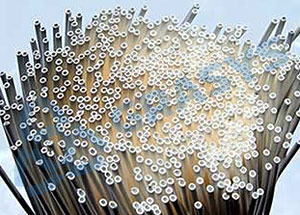| GRASYS JSC |


| Registration Date | 11 Jun 2017 |
| Share |
Others Other products
Gas separatorHollow fiber membrane
HFM NanofiberThe module body has one inlet pipe for feed gas mixture intake, and two outlet pipes for delivery of separated components. The membrane technology based gas mixture separation utilizes the difference in partial pressures on the external and internal surfaces of a hollow-fiber membrane. Highly permeating gases (e.g. H2, CO2, O2, water vapors, higher hydrocarbons) penetrate the fibers and exit the membrane cartridge through one of the pipes. Less permeating gases (e.g. CO, N2, CH4) exit the membrane modules through the other outlet pipe.
The pivot of the membrane technology is the membrane responsible for the gas separation process. The modern gas separation membrane no longer represents a flat plate or film, but is shaped as hollow fibers.
Membrane separation technologies currently use a hollow-fiber membrane consisting of porous polymer fibers coated with a separation layer. A porous fiber has a complex asymmetric structure, with the polymer density increasing towards the fiber external surface. The application of porous support layers with asymmetric structure allows separating gases under high pressures (up to 6.5 MPa). The thickness of the fiber gas separation layer does not exceed 0.1 µ, ensuring a high relative permeability of gases across the polymer membrane. The existing level of the technological development makes possible the production of polymers with a high selectivity for various gases, and, consequently, capable of deliveringhigh-purity gaseous products. A modern membrane module used for the membrane gas separation technology comprises a removable membrane cartridge and a body. The density of fibers packaging in the cartridge is estimated at some 500–700 square meters per the cartridge cubic meter, which helps to minimize the dimensions of gas separation plants.